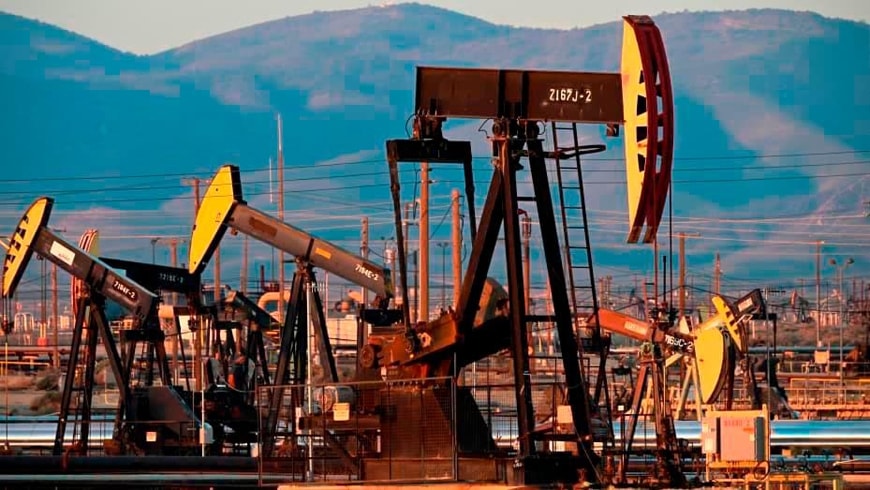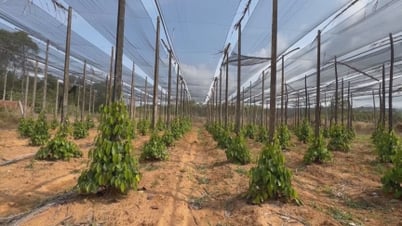World oil prices
This decision is believed to be part of the strategy of Saudi Arabia and Russia to regain market share and punish members that overproduce.
The market had expected the group to discuss a larger production increase. Oil traders said the decision to increase output by 411,000 barrels per day was already priced into Brent and WTI futures, which fell more than 1% last week.
The eight members of OPEC+ are gradually lifting voluntary cuts of 2.2 million barrels per day, which were applied on top of previous cuts.
While these eight members increased supply, some members were asked to restrain increases to compensate for production exceeding targets in previous months.
However, on May 29, Kazakhstan announced that it would not cut production, leading to speculation that OPEC+ might consider increasing production beyond the increase in May and June 2025. In the end, the group decided to keep the figure unchanged for July 2025.
United Arab Emirates (UAE) Energy Minister Suhail Mohamed Al Mazrouei said on May 27 that OPEC+ is doing its best to balance the oil market.
Following OPEC+'s announcement of a sharp increase in production in May 2025, world oil prices fell to a four-year low in April 2025, falling below the threshold of $60/barrel.
Concerns about weakening global economic growth due to US President Donald Trump’s tariff policies also contributed to the downward pressure on prices. Oil prices closed the trading session on May 30 below the threshold of 63 USD/barrel.
However, crude oil prices recovered more than $1/barrel in early trading on June 2. At 7:10 a.m. on June 2, Brent crude oil prices increased by 1.96% to $64.01/barrel and WTI crude oil prices increased by 2.2% to $62.14.
Higher summer oil demand is supporting a production increase at this time, according to OPEC+ officials, including Russian Deputy Prime Minister Alexander Novak.
The oil market remains tight and can absorb more barrels, as the effective growth will be smaller as some of the eight countries are overproducing and demand is seasonally increasing, said Giovanni Staunovo, an analyst at UBS.
Algeria is among the few countries that have requested a pause in production increases on May 31.
The cautious sentiment was heightened by news that OPEC+ may increase oil production in July, beyond the previously announced 411,000 barrels per day, with the aim of regaining market share and putting pressure on member countries that do not comply with the quota. However, this raised concerns about oversupply in the context of a clear demand recovery.
According to JPMorgan, the global oil surplus has exceeded 2.2 million barrels per day - a level that could force OPEC+ to adjust its production policy soon. The resurgence of US-China trade tensions, along with macroeconomic factors such as persistent inflation and tight monetary policy, continue to weigh on the oil price outlook.
Many organizations have lowered their 2025 Brent price forecast to an average of $66.98/barrel and WTI to $63.35/barrel. In the US, the number of oil rigs fell for the fifth consecutive week, to the lowest level since late 2021, but this signal is not enough to create a price lift when macro factors are overwhelming short-term supply and demand factors.
In addition to the 2.2 million barrels per day cut that eight members began lifting in April, OPEC+ has two other production cuts that are expected to remain in place until the end of 2026.
Domestic gasoline prices
Domestically, gasoline prices were adjusted by the Ministry of Industry and Trade and the Ministry of Finance on the afternoon of May 29.
The retail price of E5RON92 gasoline increased by 74 VND/liter to 19,196 VND/liter, and RON95-III gasoline increased by 33 VND/liter to 19,565 VND/liter.
In contrast, diesel 0.05S decreased by VND269/liter to VND17,136/liter, kerosene decreased by VND206/liter to VND17,108/liter, and fuel oil 180CST 3.5S decreased by VND248/kg to VND16,264/kg. These prices are effective from 3:00 p.m. on May 29.
Global oil demand is expected to grow by an average of 775,000 barrels per day in 2025, according to a Reuters survey, while the International Energy Agency (IEA) forecasts an increase of 740,000 barrels per day.
Source: https://baonghean.vn/opec-tang-san-luong-se-dinh-hinh-gia-dau-tho-the-nao-10298725.html




































































































Comment (0)